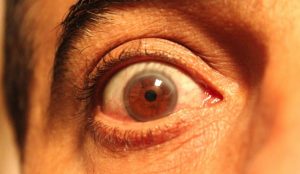Welcome to our forum. A Message To Our New and Prospective Members . Check out our Forum Rules. Lets keep this forum an enjoyable place to visit.
Currently working on errors from the latest (SimplePress) forum update. Many issues have been resoled and others are being worked on. Thank you for your patience.
 Topic RSS
Topic RSS Read the original blog post
Read the original blog post




 (0 votes)
(0 votes) 







When Your Eyes Move, So Do Your Eardrums
... and no one knows why.
Without moving your head, look to your left. Now look to your right. Keep flicking your eyes back and forth, left and right.
Even if you managed to keep the rest of your body completely still, your eyeballs were not the only parts of your head that just moved. Your ears did, too. Specifically, your eardrums—the thin membranes inside each of your ears—wobbled. As your eyes flitted right, both eardrums bulged to the left, one inward and one outward. They then bounced back and forth a few times, before coming to a halt. When you looked left, they bulged to the right, and oscillated again.
 These wobbles happen every time you move your eyes, whether or not there's external noise. The bigger the movement, the bigger the wobble. But no one knows why they happen. And until Jennifer Groh, from Duke University, discovered them, no one even knew that they happened at all.
These wobbles happen every time you move your eyes, whether or not there's external noise. The bigger the movement, the bigger the wobble. But no one knows why they happen. And until Jennifer Groh, from Duke University, discovered them, no one even knew that they happened at all.
Groh has long been interested in how the brain connects information from our eyes and ears. In a loud party, for example, we automatically read the lips of our conversational partners to…
Vibrato Desperato.... Desperately seeking vibrato
Regulars







Now this is interesting! I'm not really that surprised by it, but I'd be very interested to see what the neuroanatomy of this connection is. Primate brains evolved, to a very large extent, around vision. More than 30% of the human cerebral cortex is visual cortex, and as much as 50% is directly or indirectly related to processing visual information. To a large extent, vision affects where we direct our other senses.


 Log In
Log In Register
Register


 Offline
Offline




